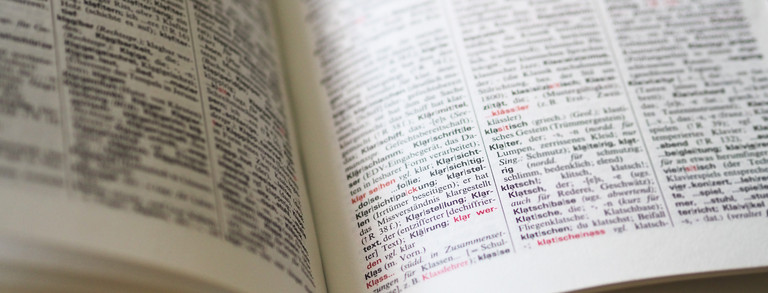Homosexuality, the| homosexual (adj.)
Homosexuality describes a sexual orientation in which individuals are romantically, emotionally, and/or sexually attracted primarily or exclusively to their own sex (Homosexuality, 2017). The term "homosexual" has historically been used in a pathologizing and criminalizing manner and is not used by people to describe themselves. The more common labels of self for homosexual people are gay and lesbian.
Although same-sex love and sexuality have always existed, the term homosexuality was coined by Karl-Maria Kertbeny, who used it in his writings against the criminalization and prohibition of homosexuality (Ambrosino 2017). Regardless of Kertbeny's political stance, the terms he used quickly became markers of exclusion. Heterosexuality was considered to be the natural "normal state" and homosexuality a deviation from this norm. This ultimately also led to the pathologization of homosexuality (Schomers, 2018). At the end of the 19th century, psychiatrist Richard von Kraft-Eibing referred to homosexuality as a hereditary nervous disease and argued that "affected persons" should not be legally persecuted but psychiatrically treated (von Kraft-Eibing, 1898). The so-called "conversion therapy", which was supposed to "cure" people of their homosexuality, is only one example of the violent methods used in this process. It was not until 1993 that the WHO removed homosexuality from the list of mental illnesses (Ostertag, 2008). Since 2020, the use of so-called conversion therapy on minors has been prohibited in Germany (§ 2 KonvBehSchG).
One's own sexuality as well as love relationships were and are a private and personal matter only if they are heterosexual. Same-sex love and sexuality, on the other hand, always has a political dimension. Homosexuality was not only regarded as "to be cured" but also to be punished, monitored, regulated and legally curtailed.
At the end of the 19th century, the criminal prosecution and police surveillance of gay men and lesbian women was legitimized by law in the German Empire. During National Socialism in Germany, gay men in particular were systematically persecuted and punished by Paragraph 175. Lesbian women were also oppressed and persecuted through homosexual persecution (LSVD, O.D).
However, through the tireless work of various associations, organisations and activists, the situation of gay, lesbian, bisexual, trans and intersex people in Germany has improved significantly. In the 1970s, Paragraph 175 was reformed and later deleted in 1994 (Schomers, 2018). In 2006, sexual orientation and gender identity were included under the term sexual identity in the General Act of Equal Treatment and lgbtqia persons were thus legally protected from discrimination (§ 1 AGG). Same-sex marriage, which has been legal in Germany since 2017, is a milestone in the fight for equal rights. The long criticized blood donation ban for gay and bisexual men was adjusted in 2021 (Küpper, O.D). And associations such as the Lesbian and Gay Association (LSVD) continue to advocate for the rights of queer people in Germany. The LSVD, for example, calls for the inclusion of sexual orientation in the third article of Basic Law for the Federal Republic of Germany (Hochrein, 2021).
Quellen
-
Ambrosino, Brandon (2017): "The Invention of ‘Heterosexuality." BBC Future, Zugriff 19.10.2022.
-
„Homosexualität“ (2017): Queer Lexikon, Zugriff 14.12.22
-
Hochrein, Axel (2021): „Artikel 3 GG ergänzen: Den Anfangsfehler endlich korrigieren“. Lesben- und Schwulenverband, Zugriff 19.10.2022
-
Küpper, Stephan David (O.D): „Richtlinien zur Spenderzulassung Homosexuelle Männer können deutlich leichter Blut spenden“. Deutsches Rotes Kreuz, letzter Zugriff: 25.10.2022
-
LSVD (O.D.): „Von 1933 bis heute: Lesben und Schwule in Deutschland und der DDR“ Lesben- und Schwulenverband. Zugriff 25.10.2022
-
Ostertag, Ernst (2008): „WHO und Homosexualität: Als Krankheit gestrichen“. Schwulengeschichte.CH, Zugriff 14.12.22
-
Schomers, Bärbel (2018): Coming-out – Queere Identitäten zwischen Diskriminierung und Emanzipatoin. Leverkusen: Budrich UniPress.
-
von Krafft-Ebing, Richard (1898): Psychopathia Sexualis. 3. Auflage. Stuttgart: Verlag von Ferdinand Enke
Das Glossar soll sich im gegenseitigen Austausch mit Leser*innen weiterentwickeln.
Wir stellen regelmäßig unter dem #klargestellt die Definition eines Begriffs zur Diskussion. Sie haben Fragen oder Anregungen? Diskutieren Sie mit und tragen Sie zu einem besseren Verständnis der Begriffe bei! Wir freuen uns über Ihre Rückmeldungen an: shk.gleichstellung@verwaltung.tu-dortmund.de





